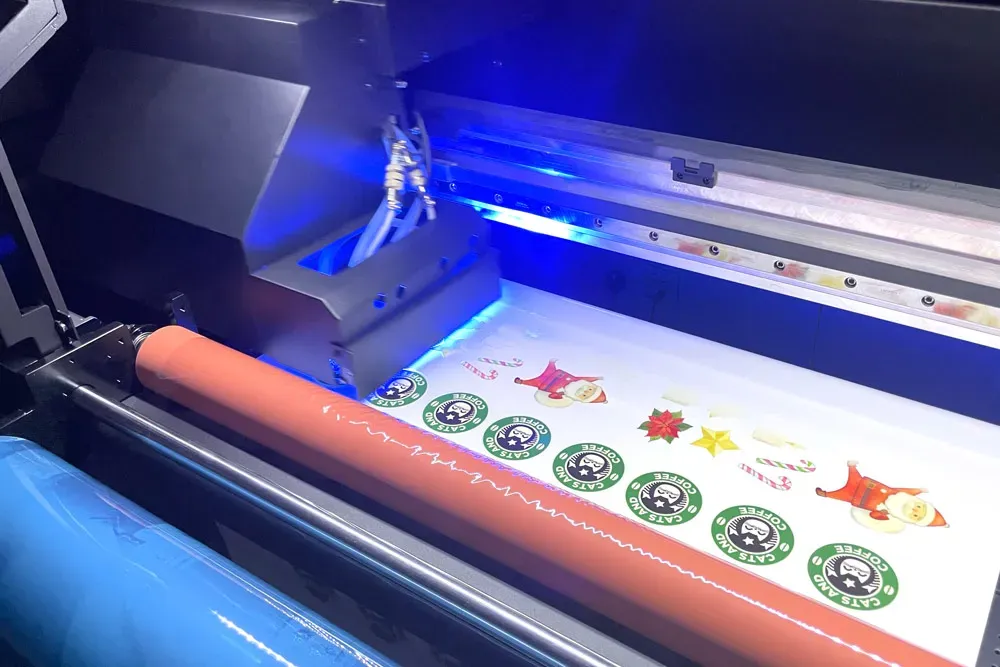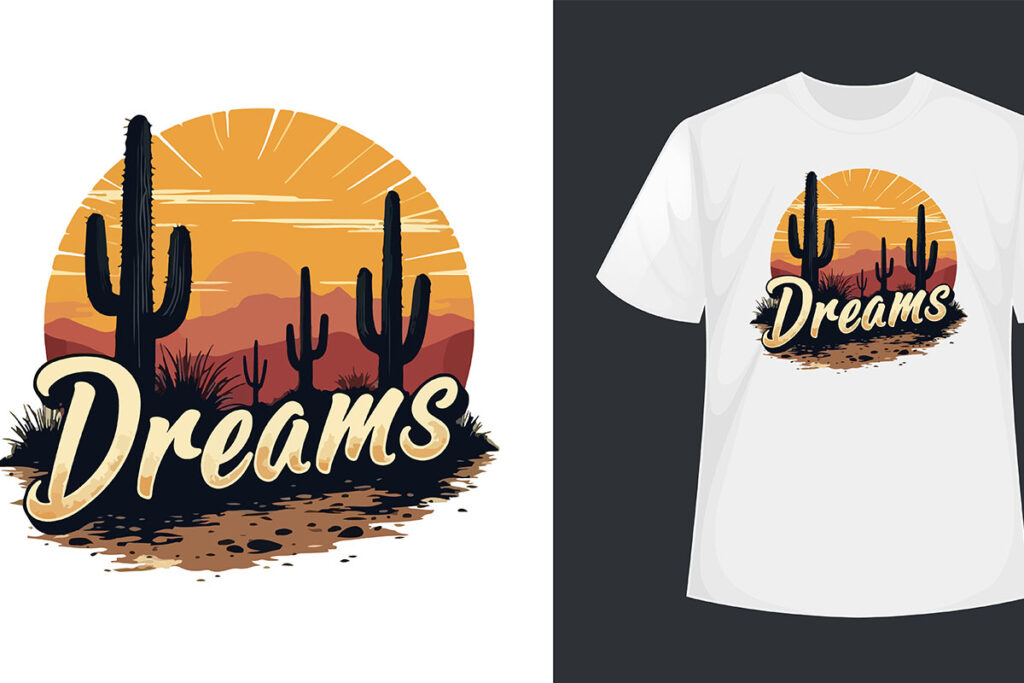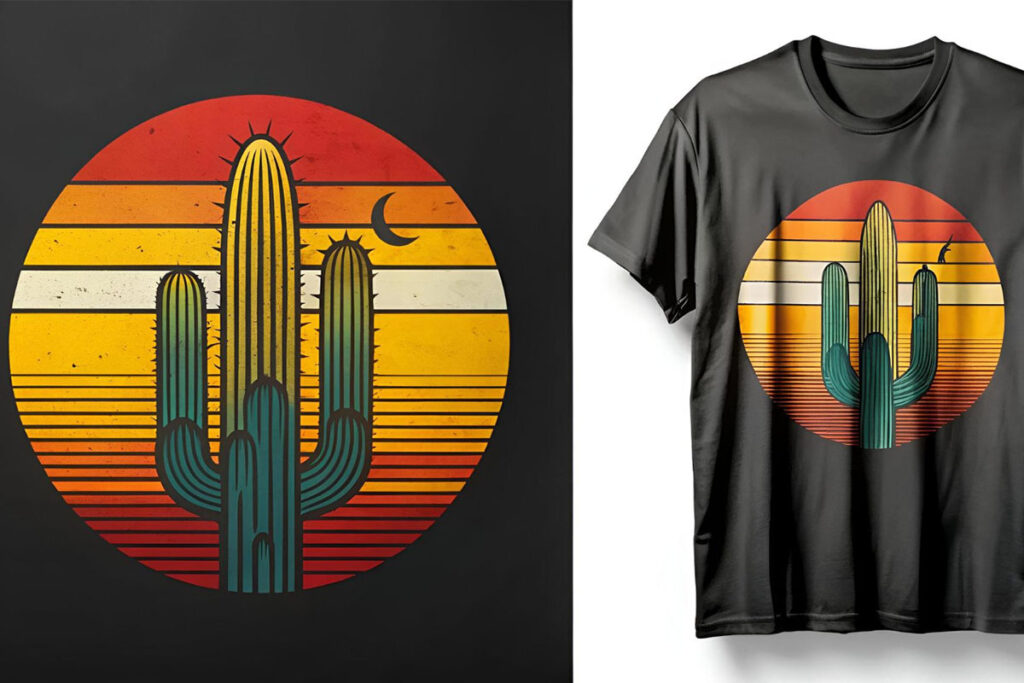UV DTF printing, or ultraviolet Direct to Film printing, represents a revolutionary leap in modern printing technology, captivating businesses with its array of innovative features. This cutting-edge method utilizes UV light to cure vibrant inks onto durable films before transferring them to various substrates, making it an ideal choice for a wide range of applications. Compared to traditional printing methods, UV DTF printing offers unparalleled advantages, from faster turnaround times to remarkable print quality. Moreover, the ability to produce intricate designs with a strong resistance to fading highlights the growing appeal of this digital printing technique. As the industry continues to evolve, understanding the benefits of UV DTF versus traditional printing is crucial for anyone looking to make informed decisions about their printing needs.
In the realm of printing technologies, ultraviolet Direct to Film printing has emerged as a noteworthy alternative to conventional practices. Often pitted against well-established methods like screen and offset printing, UV DTF printing offers new avenues for creativity and efficiency. As a digital printing technique, it excels at delivering dynamic colors and intricate details, setting a high standard for modern applications. The benefits of UV DTF, such as its quick production times and versatility across materials, make it increasingly popular among businesses seeking effective solutions. Understanding the nuances of UV DTF, especially in relation to traditional printing options, is essential for making educated choices in an ever-evolving market.
Understanding UV DTF Printing: A Modern Approach
UV Direct to Film (DTF) printing represents a significant advancement in the printing industry, merging creativity with technology. By utilizing ultraviolet light to cure inks instantly, this technique enhances the vibrancy and detail of printed images. Unlike traditional methods that rely on drying times, UV DTF produces immediate results, making it a preferred choice for fast-paced projects. The technology allows for intricate designs to be printed on a wide variety of substrates, including textiles, plastic, metal, and glass, thereby expanding the scope for creative applications.
Moreover, UV DTF printing utilizes durable inks that exhibit strong resistance to fading and wear, which is particularly beneficial for products exposed to outdoor elements. This capability ensures that prints maintain their quality over time, appealing to businesses aiming for longevity in their printed products. As companies seek more versatile solutions, the rise of UV DTF printing is a clear indication of its relevance and potential in today’s diverse printing landscape.
Comparing UV DTF and Traditional Printing Methods
When evaluating UV DTF and traditional printing methods, understanding their distinct characteristics is vital for making an informed decision. Traditional printing techniques, such as screen and offset printing, have been the standard for decades and excel in producing high volumes at a lower cost per unit. However, UV DTF stands out for its flexibility, allowing for customizable prints on a variety of materials, which traditional methods may struggle with. As such, businesses focusing on bespoke products can benefit significantly from adopting UV DTF technology.
Additionally, the cost-effectiveness of traditional printing shines when dealing with larger quantities, whereas UV DTF may be more economically viable for smaller orders. Despite potential higher startup costs associated with UV DTF equipment, its ability to facilitate personalized designs and rapid production cycles provides a compelling argument for its inclusion in the modern printing arsenal.
Benefits of Choosing UV DTF Printing
The advantages of UV DTF printing are substantial, particularly for businesses that seek consistency and quality in their print projects. One of the most notable benefits is the high resolution of prints; UV DTF technology can produce sharp and vibrant images that amplify brand messaging effectively. This quality makes it an ideal choice for custom merchandise, promotional items, and even signage.
Moreover, UV DTF printing supports sustainability trends in the industry. By using UV inks that minimize waste and promote longer-lasting prints, businesses can align themselves with environmentally conscious practices. As sustainability becomes a more significant focus for consumers worldwide, adopting UV DTF technology positions companies as leaders in eco-friendly solutions, fostering a positive brand image.
The Cost Implications of UV DTF vs Traditional Printing
Cost considerations play a crucial role in the decision-making process when selecting between UV DTF and traditional printing methods. Traditional printing, particularly for bulk orders, tends to offer lower per-unit prices due to established processes and economies of scale. This makes it the go-to option for businesses requiring large volumes, such as merchandising companies and promotional product suppliers.
Conversely, UV DTF printing may involve higher initial investment due to equipment and setup costs. However, its ability to handle smaller runs with ease often proves beneficial for niche markets and custom projects, ultimately offsetting the higher upfront expenses through increased customer satisfaction and faster turnaround times.
Evaluating Print Quality: UV DTF vs Traditional Techniques
Print quality is an essential parameter influencing the choice between UV DTF and traditional printing methods. UV DTF technology excels in creating detailed, colorful prints that capture the eye and attention of consumers. This capability is especially important for intricate designs that require precise detailing and vibrant colors. Brands that prioritize aesthetics and quality often gravitate toward UV DTF, particularly in sectors like fashion and advertising.
Traditional printing methods, while still delivering quality prints, might not achieve the same level of intricate detail as UV DTF. However, they maintain an advantage in consistency and color precision during large production runs. For businesses focused on uniformity and exact color matching over personal customizations, traditional methods might still reign supreme, especially when managed by experienced professionals.
Sustainability in UV DTF Printing Practices
Environmental considerations are becoming increasingly relevant in the printing industry, and both UV DTF and traditional methods are adapting to meet sustainability demands. UV DTF printing is making strides toward eco-friendliness by innovating ink formulations that adhere to stricter environmental standards. These new types of UV inks reduce harmful emissions and improve overall sustainability in production processes.
Traditional printing methods also have the potential to be environmentally sustainable, particularly through the use of water-based inks, which can lower environmental impact. Companies committed to green practices can leverage these alternatives to provide customers with eco-friendly options, ensuring that both UV DTF and traditional methods can fulfill the market’s demand for sustainable solutions while maintaining print quality.
Frequently Asked Questions
What is UV DTF Printing and how does it differ from Traditional Printing Methods?
UV DTF Printing, or ultraviolet direct to film printing, utilizes UV light to cure inks on a film which is then transferred to various substrates. This contrasts with Traditional Printing Methods, like screen and offset printing, which typically print directly onto the substrate. UV DTF is known for its vibrant colors and fast turnaround, making it suitable for a wider range of materials.
What are the benefits of UV DTF Printing compared to Traditional Printing Methods?
The benefits of UV DTF Printing include its versatility to adhere to diverse materials such as fabric, metal, and plastic, along with the ability to produce high-quality, detailed prints quickly. Unlike Traditional Printing Methods, UV DTF offers immediate curing and vibrant color reproduction, which enhances customization options for small batches.
How does the cost of UV DTF Printing compare to Traditional Printing Methods?
While the initial investment for UV DTF Printing equipment can be high, it becomes cost-effective for smaller orders emphasizing customization. In contrast, Traditional Printing Methods are generally more economical for high-volume runs, leading to a lower cost per unit due to bulk production efficiencies.
Can UV DTF Printing achieve high-quality results like Traditional Printing Methods?
Yes, UV DTF Printing can achieve exceptional print quality with sharp details and vibrant colors that often surpass Traditional Printing Methods for intricate designs. However, in large volume scenarios, Traditional Methods maintain advantages in print consistency and color fidelity, making them preferable for specific applications.
Is UV DTF Printing environmentally friendly compared to Traditional Printing Methods?
The environmental impact of UV DTF Printing has raised some concerns due to potentially harmful chemicals in UV inks. However, advancements in UV technology are leading to more eco-friendly practices. In contrast, Traditional Printing Methods can utilize water-based inks, which may be more environmentally sustainable, thus presenting advantages in specific contexts.
What types of projects are best suited for UV DTF Printing versus Traditional Printing Methods?
UV DTF Printing is ideal for projects requiring quick turnaround and high customization, such as promotional products and textile printing across various substrates. On the other hand, Traditional Printing Methods are best suited for large-scale projects where cost efficiency and color matching are critical, such as bulk orders and consistent branding applications.
| Aspect | UV DTF Printing | Traditional Printing Methods |
|---|---|---|
| Definition | Uses UV light to cure inks onto film for transfer. | Includes techniques like screen and offset printing. |
| Advantages | Adheres to various materials, fast turnaround, high quality. | Cost-effective for high volumes, established processes, precise color matching. |
| Cost Considerations | Higher initial costs, economical for smaller batches. | Lower per-unit costs for large batches. |
| Print Quality | Rich colors with sharp details; great for customization. | Excellent for bulk orders needing consistency and fidelity. |
| Environmental Impact | Advances in sustainable practices but concerns remain. | Water-based inks available, generally seen as more eco-friendly. |
Summary
UV DTF Printing stands out as a modern and versatile option in the printing industry, particularly for businesses focused on customization and quality. By leveraging UV light technology, this method offers quick turnaround times and the ability to print on a variety of materials, including textiles and industrial substrates. While traditional printing methods may excel in cost efficiency and established techniques for high-volume orders, the advancements in UV DTF technology, including sustainable practices, suggest it is an increasingly relevant choice. Thus, understanding these factors is essential for businesses when selecting the printing method that best aligns with their needs.



